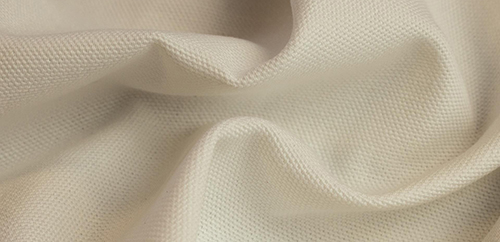WYZENBEEK VS. MARTINDALE
Both Wyzenbeek and Martindale are abrasion, or rub tests. They are however different tests which test different properties and success in one test does not infer success in the other. Wyzenbeek involves rubbing along the warp and weft of the fabric whereas Martindale is a figure-8 rub.
The Wyzenbeek and Martindale tests are the two methods commonly used to predict durability. Actual performance is determined by many factors such as fiber content, weaves, finishes, furniture design, maintenance, cleaning, and usage. Durability of an upholstery fabric is a complex combination of a number of performance tests that, in addition to abrasion, includes seam slippage, piling, tensile strength, and usage.
There is no correlation between the Wyzenbeek and Martindale tests so it is not possible to estimate the number of cycles that would be achieved on one test if the results from the other test were known.
Test Methods
Wyzenbeek
A Wyzenbeek machine is used for this test allowing sample of the test fabric to be pulled tight in a frame and held stationary. Individual test specimens cut from the warp and weft direction are then rubbed back and forth using an approved fabric as the abradant. The number of double rub cycles achieved before two yarn breaks occur, or noticeable wear is observed, is recorded as the fabric’s abrasion rating. RM COCO supplies the test results for its fabrics that are tested using the Wyzenbeek test method, but determining the suitability of a specific fabric for a specific application rests with the designer, architect and their client.
Industry Standards for Wyzenbeek Testing
- Passes 3,000 double rubs = Light- Duty Usage (residential)
- Passes 9,000 double rubs = Medium-Duty Usage (residential)
- Passes 15,000 double rubs = Heavy-Duty Usage (residential)
- Depending on end usage, items passing 20,000 and higher are considered contract fabrics
Martindale
A Martindale test is an oscillating test. Fabric samples are mounted flat and rubbed in a figure eight like motion using a piece of worsted wool cloth as the abradant. The number of cycles that the fabric can endure before fabric shows objectionable change in appearance (yarn breaks, piling, holes) is counted. Number of cycles determines abrasion rating. RM COCO supplies the test results for its fabrics that are tested using the Martindale test method, but determining the suitability of a specific fabric for a specific application rests with the designer, architect and their client.
Industry Standards for Martindale Testing
- Passes 6,000 cycles = Occasional domestic usage
- Passes 15,000 cycles = Light domestic usage
- Passes 20,000 cycles = General usage (residential)
- Passes 25,000 cycles = Heavy usage (residential)
- Passes 30,000 cycles = Severe usage (residential)
- Depending on end usage, items passing 40,00 cycles and higher are considered contract fabrics
Equivalents Between the Two Tests
Simply stated you cannot infer a Wyzenbeek score from a Martindale score, or vice versa. Many will say that Martindale results rate about a third higher compared to Wyzenbeek testing, but that is not correct. This is a “rule-of-thumb” that some use, but this is not a guarantee. The only way to really know is to test the fabric.












